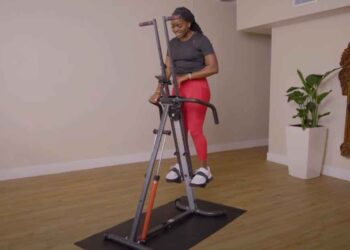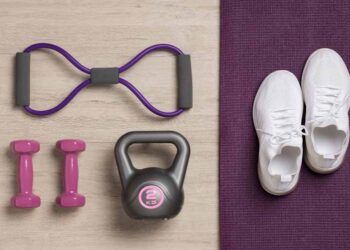Table of Contents
Deciding between cardio or strength training for health and weight loss can often feel like navigating through a maze of fitness advice, each turn presenting new theories and recommendations. In this comprehensive blog post, we delve into the heart of this debate, examining which exercise method—or combination thereof—best supports your health and weight loss goals. With a focus on providing actionable insights and debunking common myths, we aim to empower you with the knowledge needed to tailor a fitness plan that aligns with your personal objectives, lifestyle, and physical capabilities. Whether you’re a fitness novice or looking to refine your existing routine, join us as we explore the optimal pathways to a healthier, more vibrant you.
1 Introduction: Starting Your Health and Weight Loss Journey
When embarking on a journey to enhance our health and achieve weight loss, the question of whether to prioritize cardio or strength training often takes center stage. This decision is pivotal, as it shapes our daily routines, influences our physical progress, and affects our mental well-being. Each method, be it the heart-pumping vigor of cardio or the muscle-building prowess of strength training, offers unique benefits and challenges. But which one truly stands out when our goals are health and weight loss?
The aim of this blog post is not just to compare and contrast these two pillars of fitness but to delve deeper into how they impact our health and assist in weight loss. We recognize that everyone’s fitness journey is unique, influenced by personal goals, preferences, and physical conditions. Thus, we strive to provide a comprehensive guide that respects individuality while shedding light on the effectiveness of cardio and strength training.
In this exploration, we will uncover the science behind each workout method, examine their benefits, and consider how they can be combined for optimal results. Our focus is not only on physical transformation but also on fostering a healthier relationship with our bodies and exercise. Whether you are a fitness enthusiast, a beginner looking to make a positive change, or somewhere in between, this guide is crafted to empower you with knowledge and inspire action.
We understand that embarking on this fitness journey can be daunting, filled with questions and uncertainties. However, with the right information and a supportive community, achieving health and weight loss goals can become a more attainable and enriching experience. Let’s embark on this journey together, exploring the dynamic world of cardio and strength training, and discovering the most effective paths to our health and weight loss objectives.
2 Understanding Cardio Training for Health and Weight Loss
Cardio training, a cornerstone of any health and weight loss journey, offers numerous benefits for cardiovascular health and effective weight management. By integrating cardio into your routine, you’re taking a significant step towards achieving your health and weight loss objectives. At its core, cardio—short for cardiovascular exercise—refers to rhythmic activities that elevate your heart rate into a targeted zone, where the most significant fat burning occurs. From brisk walking to cycling, swimming to running, the variety of cardio exercises ensures that there is something for everyone, regardless of fitness level or personal preference.

The beauty of cardio lies in its simplicity and accessibility. Whether it’s a morning jog in the park, a quick session on the stationary bike, or a fun dance class, cardio training can seamlessly integrate into your daily routine, providing a convenient path to improving health and shedding unwanted pounds. It’s not just about burning calories during the activity; cardio exercises increase the metabolic rate, leading to more calories burned even at rest.
Moreover, the health benefits of cardio extend far beyond weight loss. Regular cardio training strengthens the heart and lungs, improves blood circulation, and reduces the risk of chronic diseases such as type 2 diabetes, high blood pressure, and heart disease. It also plays a crucial role in mental health, reducing symptoms of depression and anxiety, and improving sleep quality and cognitive function.
Cardio training is also incredibly versatile, allowing individuals to adjust intensity, duration, and type of exercise to match their fitness levels and goals. Whether you’re a beginner taking the first steps towards fitness or an experienced athlete looking to improve endurance, cardio offers a scalable and adaptable approach to enhancing health and well-being.
3 Exploring Strength Training
Strength training plays a critical role in building muscle, which is essential for boosting metabolism and supporting weight loss. Incorporating strength training into your health and weight loss plan can lead to more sustainable results.. It goes beyond building muscle mass to enhance every aspect of your health and significantly contribute to weight loss efforts. Unlike cardio, which primarily targets heart rate and endurance, strength training focuses on using resistance to induce muscular contraction, which builds the strength, anaerobic endurance, and size of skeletal muscles.

One of the most compelling aspects of strength training is its profound impact on metabolism. Muscle tissue burns more calories at rest compared to fat tissue, meaning the more muscle you have, the higher your resting metabolic rate. This not only aids in weight loss but also helps in weight maintenance, making it easier to keep off the pounds you’ve shed.
Beyond the aesthetic benefits, strength training fortifies bone density, improves joint flexibility, and reduces the risk of chronic diseases such as osteoporosis, heart disease, and type 2 diabetes. It also enhances posture, balance, and stability, which are crucial for daily activities and preventing falls, especially as we age.
Strength training isn’t just for bodybuilders or those looking to bulk up. It’s for anyone seeking to improve their quality of life. With exercises that can be modified for any skill level and performed with equipment or using body weight, it’s an accessible form of fitness for everyone. Whether you’re performing squats, lifting weights, or doing push-ups, the key is to focus on form and gradually increase resistance or repetitions as your strength improves.
For those concerned about starting a strength training routine, the benefits are clear: enhanced metabolic rate, improved physical strength, better bone health, and a leaner physique. It’s a testament to the body’s ability to transform and adapt, regardless of where you begin.
4 Comparing the Benefits for Health
When we consider the journey toward optimal health and weight loss, understanding the distinct benefits that cardio and strength training offer becomes pivotal. Each discipline contributes uniquely to our overall health, influencing different aspects of physical fitness and well-being. By comparing these benefits, we can make informed decisions about how to tailor our exercise routines to meet our individual health goals.
Cardio Training: The Heart of Fitness
Cardiovascular exercise excels in improving heart health. By increasing the heart rate, cardio exercises strengthen the heart muscle, enhancing its efficiency in pumping blood throughout the body. This not only improves circulation but also lowers blood pressure and reduces the risk of heart disease. Additionally, cardio training is highly effective in burning calories, which is essential for weight loss and maintaining a healthy body composition.
The mental health benefits of cardio are also noteworthy. Regular cardio workouts release endorphins, the body’s natural mood elevators, helping to alleviate symptoms of depression and anxiety. It also promotes better sleep patterns and increases energy levels, contributing to an overall sense of well-being.
Strength Training: Building a Stronger Foundation
Strength training, on the other hand, focuses on building muscle mass and strength, which has a direct impact on boosting metabolism. Muscle tissue burns more calories at rest compared to fat tissue, meaning that increasing muscle mass through strength training can elevate the resting metabolic rate, aiding in long-term weight management.

Furthermore, strength training is critical for bone health. It increases bone density and reduces the risk of osteoporosis. By stressing the bones, strength exercises trigger an increase in bone-forming cells, making the bones stronger and more resilient to fractures.
Strength training also has a significant role in improving functional fitness, which refers to the ability to perform daily activities with ease. This includes everything from carrying groceries to climbing stairs and playing with children. As muscle strength and endurance improve, so does the quality of daily life.
Integrating Cardio and Strength Training for Holistic Health
The comparison reveals that while cardio training is paramount for cardiovascular health and caloric burn, strength training is indispensable for metabolic health, bone density, and functional fitness. The key to maximizing health and weight loss is not choosing one over the other but integrating both into a balanced fitness regimen.
5 Analyzing the Impact on Weight Loss
Embarking on a weight loss journey often leads to the crossroads of choosing between cardio and strength training. Each method impacts weight loss differently, and understanding these effects can significantly influence your approach to shedding pounds effectively and sustainably.

The Caloric Burn of Cardio Training
Cardio training is renowned for its ability to burn a high number of calories in a relatively short period. Activities such as running, cycling, or swimming increase heart rate and metabolism, leading to immediate calorie expenditure. This direct burning of calories is crucial for creating a calorie deficit, the cornerstone of weight loss.
Moreover, the adaptability of cardio exercises allows for high-intensity interval training (HIIT), which alternates between periods of intense activity and rest. HIIT has been shown to continue burning calories long after the workout is finished, a phenomenon known as the “afterburn effect.” This makes cardio an efficient tool for those looking to enhance their weight loss efforts.
Strength Training: A Metabolic Enhancer
While strength training may not burn as many calories during the exercise itself compared to cardio, its impact on weight loss is profound and multifaceted. Building muscle mass through resistance exercises increases resting metabolic rate (RMR), meaning you burn more calories even when not actively working out. This enhanced metabolic rate is a critical component in long-term weight management and loss.
Furthermore, strength training contributes to a leaner body composition by increasing muscle mass relative to fat. This shift not only improves metabolism but also shapes the body, making it stronger and more toned. The benefits of strength training extend beyond the scale, affecting how the body looks and feels.
Combining Cardio and Strength for Optimal Weight Loss
The most effective weight loss strategies often involve a combination of both cardio and strength training. This approach allows individuals to reap the benefits of immediate calorie burn from cardio, along with the long-term metabolic enhancements and body composition improvements offered by strength training. By integrating both methods into a fitness regimen, one can accelerate weight loss while also building a strong, resilient body.
6 Synergistic Effects of Combining Cardio and Strength Training
The journey toward optimal health and weight loss is multifaceted, requiring a holistic approach to exercise. While both cardio and strength training offer unique benefits, it’s their combination that can lead to the most significant improvements in health and body composition. This synergy between cardio and strength training enhances the effectiveness of each, providing a comprehensive fitness solution that addresses various aspects of health and weight loss.

The Comprehensive Benefits of a Combined Approach
Combining cardio and strength training creates a well-rounded exercise regimen that targets both aerobic fitness and muscular strength. Cardiovascular exercises increase heart rate and endurance, burning calories and improving heart health. On the other hand, strength training focuses on building muscle mass and strength, which boosts metabolism and supports bone health. When these methods are integrated, they complement each other, leading to enhanced overall fitness and more efficient weight loss.
This synergistic approach not only accelerates fat loss but also contributes to a leaner, more toned physique. Cardio burns calories and reduces fat, while strength training increases muscle mass, shaping and defining the body. Additionally, this combination helps prevent the plateau effect often encountered in weight loss journeys, where progress slows down or stalls when only one type of exercise is performed.
Improved Health Outcomes
The health benefits of combining cardio and strength training extend beyond weight loss and aesthetic improvements. This approach can significantly reduce the risk of chronic diseases such as heart disease, diabetes, and obesity. Moreover, it improves mental health by reducing symptoms of depression and anxiety, enhancing sleep quality, and boosting overall mood and energy levels.
Maximizing Efficiency and Preventing Overtraining
A combined approach allows for more efficient use of exercise time, providing a balanced workout that can fit into a busy schedule. By alternating between cardio and strength training days or incorporating both into a single session, individuals can achieve comprehensive fitness benefits without spending excessive time working out. Furthermore, this variation in exercise types helps prevent overtraining and reduces the risk of injury, ensuring a safer and more sustainable fitness journey.
7 Personalizing Your Workout Plan
Embarking on a fitness journey is a deeply personal endeavor. Understanding that no one-size-fits-all solution exists is crucial to crafting a workout plan that not only meets your unique health and weight loss goals but also fits your lifestyle, preferences, and physical capabilities. Personalizing your workout plan ensures that you remain engaged, motivated, and on track to achieving your objectives.

Assessing Your Fitness Goals
The first step in personalizing your workout plan is to clearly define your goals. Are you aiming to lose weight, improve cardiovascular health, build muscle, or enhance overall fitness? Your objectives will dictate the type of exercises, the balance between cardio and strength training, and the intensity and frequency of your workouts. Setting specific, measurable, achievable, relevant, and time-bound (SMART) goals can provide a clear roadmap and help keep you focused and motivated.
Understanding Your Preferences and Lifestyle
Exercise should not be a chore but an enjoyable part of your day. Consider what types of physical activities you enjoy. Do you prefer the solitude of long-distance running, the social aspect of group classes, or the challenge of weightlifting? Your preferences will play a significant role in determining which exercises to include in your plan. Additionally, consider your lifestyle: How much time can you realistically dedicate to exercise each week? Do you have access to a gym, or do you need workouts that can be done at home with minimal equipment?
Tailoring the Workout to Your Physical Condition
Acknowledging your current physical condition is essential for personalizing your workout plan. If you are new to exercise or have any health concerns or injuries, it may be necessary to start with low-impact exercises and gradually increase intensity. Conversely, if you have a solid fitness foundation, you might focus on more challenging workouts that push your limits. Consulting with a fitness professional can provide valuable insights and ensure that your workout plan is safe and effective.
Adjusting and Evolving Your Plan
Your workout plan should be dynamic, adjusting as you progress toward your goals. Regularly assess your progress and be willing to modify your plan as needed. This could mean increasing the intensity of your workouts, adding new exercises to avoid boredom, or recalibrating your goals as you achieve them. Flexibility is key to maintaining motivation and continuing to make progress.
8 Common Myths and Misconceptions
One of the most persistent myths is the oversimplification of the roles of cardio and strength training. Cardiovascular exercise is indeed excellent for burning calories and improving heart health, but its benefits extend to strengthening muscles and enhancing endurance. Similarly, while strength training is key to building muscle mass, it also boosts metabolism, aids in fat loss, and supports bone health. Understanding the multifaceted benefits of both exercise types is essential for creating a balanced workout regimen.
Myth 2: Lifting Weights Makes Women Bulky
Many women shy away from strength training due to the fear of becoming too muscular. However, due to differences in hormones and body composition, most women do not gain muscle mass in the same way men do. Instead, strength training for women typically results in a toned, lean physique, improved strength, and enhanced metabolic rate, contributing to more effective weight management.
Myth 3: You Can Target Fat Loss in Specific Areas
The idea that you can target fat loss in specific areas of the body, such as the belly or thighs, through specific exercises is a widespread misconception. While spot training can strengthen and tone muscles in targeted areas, fat loss is a more complex process that occurs across the entire body in response to a calorie deficit, not the specific areas being exercised.
Myth 4: The More You Sweat, the More Fat You Lose
Sweating is a physiological response to regulate body temperature, not a direct indicator of fat loss. The amount you sweat is influenced by many factors, including environmental temperature and your personal physiology, rather than the effectiveness of your workout or the amount of fat being burned.
Myth 5: No Pain, No Gain
This age-old adage can be misleading and potentially harmful. While some muscle soreness is normal after a workout, especially when trying new exercises or increasing intensity, pain should not be considered a sign of a good workout. Excessive pain could indicate overtraining or injury, underscoring the importance of listening to your body and allowing adequate recovery time.
9 Getting Started: First Steps to Take
Embarking on a fitness journey, especially with goals related to health and weight loss, can feel overwhelming. Knowing where to begin is often the hardest part, but with a clear path and a step-by-step approach, you can set the foundation for a successful and sustainable fitness regimen. Here are the initial steps to take as you start this journey.
Step 1: Define Your Goals
Begin by setting clear, achievable goals. Whether it’s losing a certain amount of weight, improving cardiovascular health, or building strength, having specific objectives will guide your workout plan and help you stay motivated. Remember to make your goals SMART (Specific, Measurable, Achievable, Relevant, Time-bound) for the best chance of success.
Step 2: Assess Your Current Fitness Level
Take stock of your current fitness level by considering factors like how long you can exercise at a stretch, the types of activities you’re capable of doing, and any health conditions that might affect your ability to perform certain exercises. This assessment will help you tailor your workout plan to your current capabilities, reducing the risk of injury and ensuring gradual progress.
Step 3: Create a Balanced Workout Plan
Based on your goals and fitness level, develop a workout plan that includes a mix of cardio and strength training. This balance is crucial for maximizing health benefits and achieving weight loss in a healthy, sustainable way. Start with exercises you enjoy, as you’re more likely to stick with activities that you find enjoyable.
Step 4: Gather Resources and Equipment
Identify the resources and equipment you’ll need to execute your plan. This might include gym membership, workout clothes, a set of dumbbells, or simply a pair of good running shoes. Remember, many effective workouts can be done with minimal or no equipment, so don’t let this step become a barrier.
Step 5: Schedule Your Workouts
Incorporate workout times into your weekly schedule. Consistency is key to achieving fitness goals, so find times that work for you and treat them as non-negotiable appointments. Starting with three to four days a week can be a manageable way to establish a routine without overwhelming yourself.
Step 6: Start Slow and Gradually Increase Intensity
Begin with lower intensity workouts and gradually increase the intensity as your fitness improves. This approach helps prevent burnout and injury, making your fitness journey more enjoyable and sustainable.
Step 7: Monitor Your Progress and Adjust as Needed
Keep track of your progress towards your goals and be prepared to adjust your workout plan as needed. This might mean increasing the intensity, adding new exercises, or even reevaluating your goals as you make progress.
10 Safety Tips and Injury Prevention
Embarking on a fitness journey is a commendable step towards enhancing your health and achieving weight loss goals. However, the excitement to see results should not overshadow the importance of safety. Ensuring that exercises are performed correctly and safely is crucial to prevent injuries and sustain your fitness journey in the long run. Here are essential safety tips and strategies for injury prevention.
Understand Proper Form and Technique
Before diving into any new exercise, take the time to learn the correct form and technique. This is paramount, as improper form can lead to strain and injuries. Whether it’s a cardio activity like running or strength training exercises like squats and deadlifts, understanding how to perform these movements correctly will protect your muscles and joints.
Start with a Warm-Up
A proper warm-up prepares your body for the demands of the workout ahead. It increases blood flow to the muscles, enhances flexibility, and reduces the risk of injury. Spend at least 5-10 minutes on light aerobic activity and dynamic stretches before starting your main workout.
Gradually Increase Intensity
One of the most common mistakes is increasing the intensity or volume of workouts too quickly. Your body needs time to adapt to new stresses. Whether it’s adding weights, extending your workout duration, or increasing your running mileage, do so gradually to avoid overuse injuries.
Listen to Your Body
Paying attention to your body’s signals is crucial. If you experience pain or discomfort beyond the normal muscle soreness associated with exercise, it may be a sign to rest or adjust your workout. Pushing through pain can lead to serious injuries, derailing your fitness progress.
Incorporate Rest and Recovery
Rest days are an essential part of any fitness regimen. They allow your muscles to repair and strengthen, preventing overuse injuries. Ensure you have at least one to two rest days per week, depending on the intensity of your workouts.
Stay Hydrated and Nourished
Proper hydration and nutrition support muscle function and recovery, reducing the risk of cramps and injuries. Ensure you’re drinking enough water before, during, and after workouts and consuming a balanced diet to fuel your body for exercise and recovery.
Use the Right Equipment
Wearing appropriate footwear and using equipment correctly not only improve your performance but also prevent accidents and injuries. Make sure your shoes provide sufficient support for your chosen activity, and familiarize yourself with any equipment you’re using, especially if it’s new to you.
11 Conclusion
Embarking on a fitness journey to improve health and achieve weight loss is a commendable endeavor that can significantly enhance your quality of life. However, navigating the vast sea of information on cardio and strength training, deciphering the best methods for your goals, and understanding how to safely implement these strategies can be overwhelming. Through this comprehensive guide, we’ve explored the unique benefits of cardio and strength training, the synergistic effects of combining both, and how to personalize and safely approach your workout regimen.
Remember, the journey to improved health and weight loss is not a race—it’s a marathon. The key is consistency, patience, and a balanced approach that incorporates both cardio and strength training tailored to your personal goals and preferences. By understanding the foundational principles laid out in this guide, you’re better equipped to make informed decisions about your fitness routine, navigate common myths and misconceptions with confidence, and take the first steps towards a healthier, more active lifestyle.
Safety should always come first. Paying attention to proper form, listening to your body, and allowing adequate rest and recovery are crucial components of any successful fitness plan. Equally important is the willingness to adjust and evolve your workout plan as you progress, ensuring that your fitness journey remains dynamic, enjoyable, and aligned with your evolving health and wellness goals.
As you embark on this journey, remember that every step forward is a step towards better health and well-being. Celebrate your progress, learn from the challenges, and stay committed to your goals. The path to health and weight loss is a personal journey, one that is uniquely yours. Embrace it with enthusiasm, determination, and the knowledge that you have the power to transform your life through fitness.













